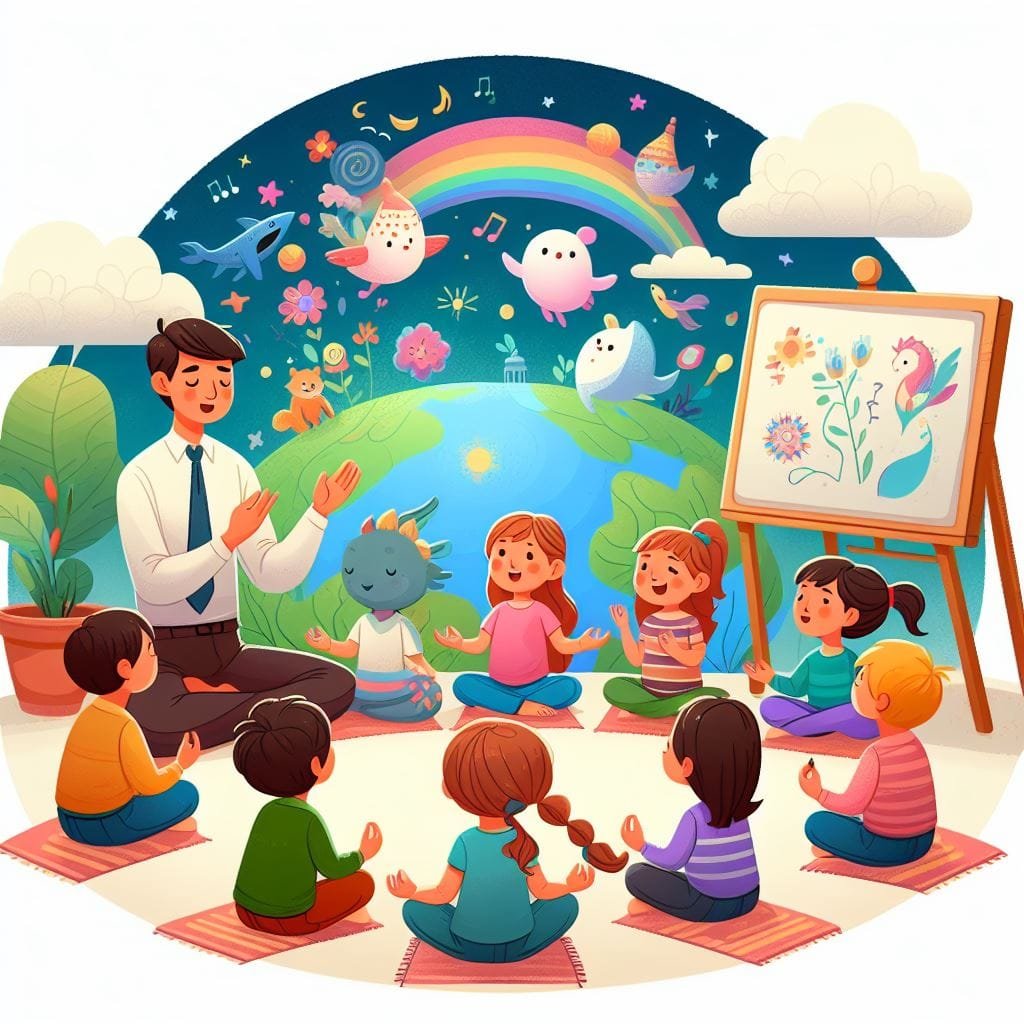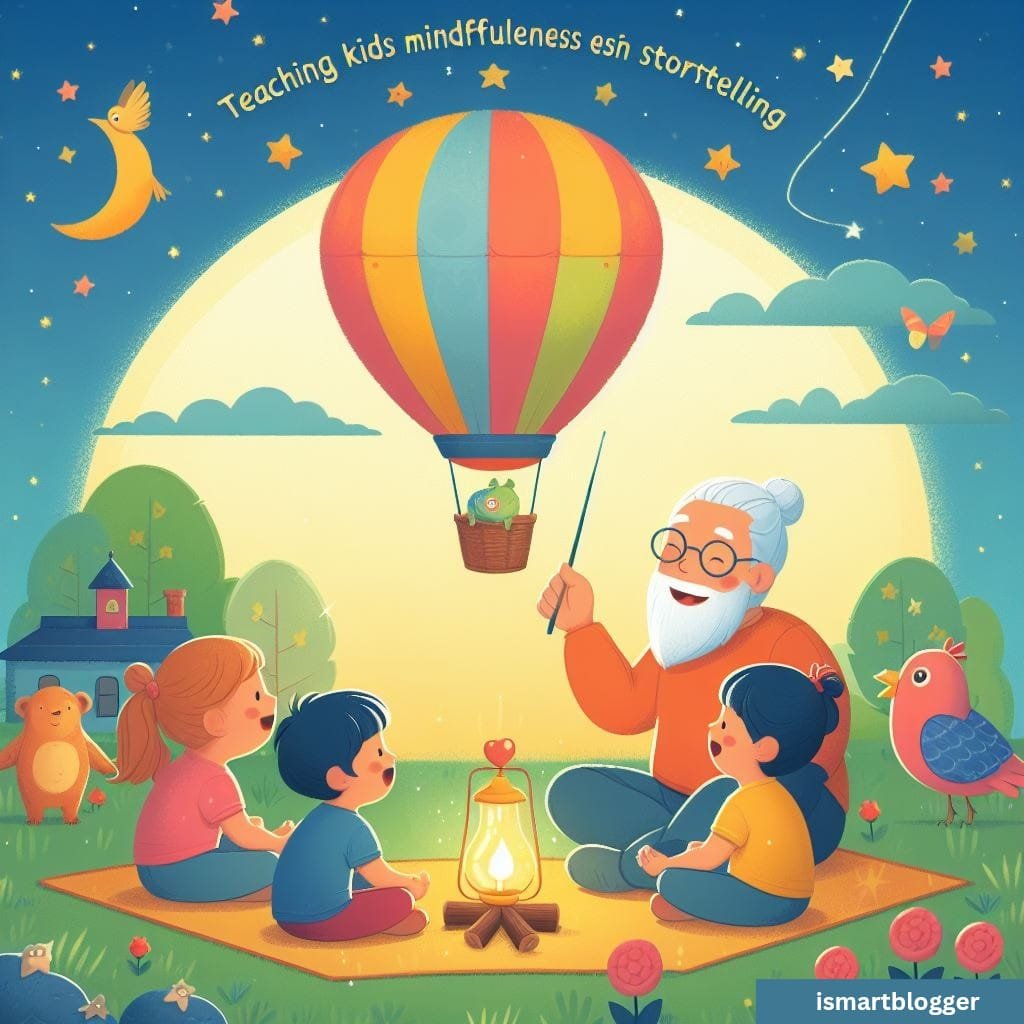Introduction
Mindfulness, a practice rooted in ancient traditions, has gained significant attention in recent years due to its numerous benefits for mental and emotional well-being. It is the art of being fully present and aware of one’s thoughts, feelings, sensations, and surroundings without judgment. While mindfulness is often associated with adults seeking stress reduction and improved focus, it is equally important to introduce children to this transformative practice at an early age.
Definition of mindfulness
Mindfulness can be defined as a state of conscious awareness that involves paying attention to the present moment with intention and without judgment. It encourages individuals to observe their thoughts, sensations, and emotions as they arise without getting caught up in them or reacting automatically. By cultivating this non-judgmental awareness, kids can learn to better regulate their emotions, develop a sense of inner calmness, and make wiser choices.
Importance of teaching mindfulness to kids
In today’s fast-paced world filled with distractions and pressures, teaching mindfulness to children has become crucial. Mindfulness equips them with essential life skills that promote overall well-being and resilience. Research indicates that practicing mindfulness from an early age contributes positively to the development of emotional intelligence, empathy towards others, self-regulation abilities, concentration span improvement, stress reduction techniques, and overall mental health maintenance.
How storytelling can be an effective tool for teaching mindfulness
Children possess vivid imaginations that thrive on stories. Storytelling provides not only entertainment but also serves as a powerful medium for delivering valuable lessons in a relatable format.
Integrating mindfulness teachings into stories allows children to engage their minds while absorbing important concepts effortlessly. The narrative nature of storytelling helps children connect emotionally with the characters’ experiences while allowing them space for introspection about their own thoughts and feelings.
By incorporating mindfulness principles into stories, educators and parents can effectively teach kids how to bring mindfulness into their daily lives, promoting self-awareness, empathy, and emotional well-being. Moreover, storytelling has been a cornerstone of human culture for centuries.
It is an age-old tradition that has captivated audiences throughout time by conveying moral values, cultural heritage, and universal wisdom. By leveraging this timeless art form to instill mindfulness in children’s minds, we create an engaging and enjoyable way for them to learn essential life skills that will benefit them well into adulthood.
The Power of Storytelling
Historical significance of storytelling in human culture
Storytelling holds a timeless place in human culture, dating back to ancient civilizations. Throughout history, stories were passed down from generation to generation, serving as a means of preserving cultural traditions, sharing knowledge, and transmitting values.
From oral folklore shared around campfires to epic tales recorded in texts, storytelling has been an integral part of human communication and entertainment. It was through stories that ancient civilizations taught their children about their heritage, customs, and moral principles.
Impact of stories on children’s imagination and cognitive development
Stories have a profound impact on children’s imagination and cognitive development. When immersed in a captivating story, children’s minds are transported into vivid worlds filled with imaginative characters and settings. This imaginative engagement enhances their creativity and nurtures their ability to think outside the box.
Through exposure to diverse stories that explore different perspectives and ideas, children develop critical thinking skills as they analyze situations, predict outcomes, and make connections between the story elements. Moreover, storytelling stimulates various cognitive processes such as memory retention and language acquisition.
Children actively listen to the narrative structure, follow plot details, understand character motivations, and absorb new vocabulary within the context of the story. These cognitive exercises strengthen neural pathways associated with comprehension and linguistic skills.
The emotional connection created through storytelling
Storytelling provides an emotional connection between the storyteller or author and the listener or reader. Through well-crafted narratives that depict relatable experiences or emotions, stories evoke empathy within children by allowing them to put themselves in the shoes of characters facing challenges or celebrating triumphs.
This emotional connection facilitates emotional intelligence development as kids learn to recognize various emotions displayed by characters and understand their motivations. Furthermore, storytelling offers a safe space for children to explore complex emotions within themselves.
As they identify with story characters and their emotional journeys, children can process their own feelings and gain insight into managing emotions in their own lives. This emotional engagement with stories fosters self-awareness, empathy, and social-emotional skills, promoting overall emotional well-being.
Overall, the power of storytelling lies not only in its ability to entertain but also in its profound impact on children’s imagination, cognitive development, and emotional connection to the world around them. By recognizing the historical significance of storytelling and harnessing its potential within mindfulness education for kids, we can unlock a powerful tool for nurturing young minds.
Mindfulness and its Benefits for Kids
Embracing the Present: Cultivating Mindful Awareness
Mindfulness, in its essence, involves nurturing a state of present-moment awareness without judgment. It encourages individuals, including children, to direct their attention intentionally towards their thoughts, emotions, and sensory experiences in the here and now.
By cultivating this skill of mindfulness from an early age, children can develop a heightened sense of self-awareness that extends to their relationships with others and the world around them. When children engage in mindful practices, they learn to observe their inner world without immediately reacting or passing judgment on their thoughts or feelings.
Mindfulness empowers kids to recognize that all emotions are valid and temporary experiences that do not define them. By fostering non-judgmental self-awareness, mindfulness allows children to navigate through life’s ups and downs with greater resilience.
Unlocking Remarkable Benefits: Research-backed Findings
Numerous studies have revealed the remarkable benefits mindfulness practices offer to children’s overall well-being. One significant advantage is the improvement in focus and attention span. Regular engagement with mindfulness exercises has been shown to enhance cognitive abilities related to sustained attention and concentration.
As young minds become more attuned to the present moment, they gain better control over distractions and can focus more effectively on tasks at hand. Moreover, mindfulness plays a pivotal role in emotional regulation for kids by providing them with tools for managing difficult emotions such as anger or anxiety.
Through increased awareness of their inner landscape and regular practice of techniques like deep breathing or body scans, children acquire skills for recognizing emotional triggers and responding thoughtfully rather than impulsively. This ability not only improves their emotional well-being but also positively impacts their interactions with peers and family members.
In addition to improved focus and emotional regulation skills, mindfulness has been associated with reduced stress levels among children. By cultivating an attitude of non-judgmental acceptance and learning to be present in the moment, kids develop resilience to stressors they encounter in their daily lives.
Mindfulness exercises help children tap into a sense of calm and inner strength, enabling them to handle challenging situations with greater ease and equanimity. Mindfulness offers a remarkable array of benefits for children’s holistic development.
By nurturing present-moment awareness without judgment, mindfulness empowers kids with self-awareness, emotional regulation skills, improved focus, and reduced stress levels. As we delve deeper into the use of storytelling as a tool for teaching mindfulness to children, it becomes evident that combining these two powerful practices can create an enriching environment for fostering essential life skills within our young ones.

Incorporating Mindfulness into Storytelling Sessions
Choosing Age-Appropriate Stories that Promote Mindfulness Themes
When selecting stories for mindfulness-based storytelling sessions, it is crucial to consider the age range of the children involved. Younger children, between the ages of 3 to 6, benefit from simple narratives that introduce them to basic mindfulness concepts. These stories often revolve around themes like nature, gratitude, and self-compassion.
For instance, a story about a little bird exploring its surroundings and expressing gratitude for the beauty of nature can help young children develop an understanding of appreciation and mindful observation. For older kids, aged 7 to 12, more complex narratives can be explored while still emphasizing mindfulness themes.
These tales may delve into deeper aspects of self-awareness and compassion towards oneself and others. Stories such as a journey through a magical forest where characters learn about courage, empathy, and resilience enable older children to connect with their own emotions while recognizing the importance of empathy in their interactions with others.
Creating a Calm and Conducive Environment for Storytelling Sessions
To foster a mindful atmosphere during storytelling sessions, it is essential to create an environment that promotes relaxation and focus. Soft lighting can enhance the mood by providing a gentle ambiance that allows kids to feel at ease.
Dimming harsh lighting or using fairy lights can add warmth and tranquility to the space. In addition to lighting considerations, comfortable seating arrangements are vital for ensuring physical comfort during extended storytelling sessions.
Providing cushions or bean bags allows children to relax their bodies while staying engaged in the narrative. Adjustable seating options like floor mats or chairs with backrests cater to different preferences and support good posture.
Engaging Kids Through Interactive Elements like Props or Puppets
To enhance engagement during mindfulness-focused storytelling sessions, incorporating interactive elements like props or puppets can captivate children’s attention and stimulate their imagination. Props such as soft toys or objects related to the story can be used to create a tangible connection between the narrative and the children’s sensory experience.
Puppets are particularly effective because they bring characters to life. By giving each character a distinct voice and personality, puppetry adds depth and excitement to the storytelling process.
Children can interact with the puppets, asking them questions or sharing their thoughts, fostering a sense of involvement and active participation. By carefully choosing age-appropriate stories with mindfulness themes, creating a calm environment, and incorporating interactive elements like props or puppets, mindfulness-based storytelling sessions become immersive experiences that enable children to cultivate awareness and emotional intelligence while enjoying the magic of storytelling.
Techniques to Teach Mindfulness Through Stories
Breathing exercises: Introducing deep breathing techniques during specific story moments to encourage relaxation and presence.
One effective technique to teach mindfulness through storytelling is incorporating breathing exercises at crucial story moments. For instance, as the protagonist encounters a challenge within the narrative, children can be encouraged to inhale deeply, filling their lungs with air. This deliberate inhalation symbolizes gathering strength, resilience, and unwavering focus.
As the problem resolves or tension eases, children can then exhale slowly and steadily, releasing any accumulated stress or negativity. By associating deep breaths with story events, children learn that mindful breathing aids in calming both the mind and body.
Explaining the benefits of deep breathing is essential for cultivating understanding in children. Take a moment during storytelling sessions to discuss how intentional breathing helps regulate emotions and reduces anxiety.
Emphasize that by taking slow, controlled breaths, they are providing their brains and bodies with oxygen-rich air that promotes a sense of calmness and overall well-being. Reinforcing this connection between deep breathing and mental clarity empowers kids by giving them a practical tool they can implement not just during storytelling but also in their daily lives.
Visualization exercises: Guiding children to imagine themselves in the story’s setting or as the characters to enhance sensory awareness.
Another technique for teaching mindfulness through stories is through visualization exercises that foster sensory awareness. Encourage children to vividly imagine themselves within the story’s setting or even take on the role of one of its characters.
Prompt them to notice the sounds, smells, textures, colors—every detail they can conjure up within their imagination. By engaging multiple senses while visualizing different elements of the narrative world, kids develop greater focus and strengthen their imaginative abilities.
Discussing how visualization enhances focus and imagination is an important part of this technique. Highlight the notion that when children actively engage their minds in creating detailed mental images, they are training their brains to concentrate and become more present.
Encourage them to share their visualizations, allowing for a collective experience that enriches their connection with the story and each other. By emphasizing the importance of focused visualization, children are empowered to harness the power of their imagination to enhance mindfulness.
Body scan activities: Using stories that…
Body scan activities involve using stories that encourage children to cultivate awareness of bodily sensations and physical presence. This technique prompts kids to pause during storytelling sessions and pay attention to different parts of their bodies progressively. For example, as a story unfolds, you can ask children to notice how their feet feel against the floor or how tension might manifest in their shoulders or hands.
By guiding them through this process, they learn how thoughts and emotions can manifest as physical sensations within the body. Using body scan activities within stories allows kids to develop a sense of internal awareness—a skill fundamental for mindfulness practice—by learning to observe bodily sensations without judgment.
Explain that this exercise helps them become more attuned to both pleasant and unpleasant physical feelings, fostering self-compassion and an understanding that emotions come and go like waves in an ocean. Through such embodiment practices tied with storytelling, children begin recognizing how interconnected their minds and bodies truly are.
Conclusion
Incorporating mindfulness techniques into storytelling sessions provides a powerful platform for teaching kids valuable life skills while capturing their imagination. Breathing exercises introduce deep breathing as a means of relaxation and self-regulation during key moments in stories, offering practical tools for calming both mind and body. Visualization exercises enhance focus, imagination, and sensory awareness by immersing children in the story’s narrative world through rich mental imagery. Additionally, body scan activities encourage internal awareness by prompting kids to observe bodily sensations without judgment—fostering self-compassion and emotional resilience. By intertwining these techniques with storytelling, we empower children to develop mindfulness skills that will serve them well throughout their lives, promoting emotional well-being and a sense of inner peace.





